Time series forecasting helps predict campaign performance by analyzing historical data. It improves decision-making, budget allocation, and performance tracking for marketers. Key metrics like ROAS, ROI, and mROI benefit from these methods. Companies using forecasting see up to 20% profit increases.
Main Methods:
- Basic Models: Moving Average, Exponential Smoothing (simple trends).
- ARIMA: Captures complex patterns, ideal for short-term forecasts.
- Machine Learning: Best for large datasets with non-linear relationships.
Steps for Success:
- Clean and prepare data (consistent intervals, handle missing values).
- Choose the right model for your goals (e.g., ARIMA for trends, ML for complex data).
- Regularly update models to maintain accuracy.
Quick Comparison Table:
| Model Type | Best For | Key Advantage |
|---|---|---|
| Moving Average | Short-term trends | Easy to implement |
| ARIMA | Steady growth patterns | Captures complex relationships |
| Machine Learning (LSTM) | Large, intricate datasets | High prediction accuracy |
Forecasting can transform marketing by improving precision and reducing costs. Start simple and scale up as your data and expertise grow.
How to build ARIMA models in Python for time series forecasting
Main Forecasting Methods
Time series forecasting methods help marketers select the most suitable approach for their goals.
Basic Methods: Moving Average and Smoothing
Moving averages and smoothing techniques are useful for spotting performance trends in metrics like daily ad impressions or weekly conversion rates.
A simple moving average predicts outcomes by averaging past data . Here are two commonly used approaches:
| Method | How It Works | Best Used For |
|---|---|---|
| Simple Moving Average | Gives equal weight to all past observations | Short-term trend identification |
| Exponential Smoothing | Assigns decreasing weight to older data | Tracking trends with quick changes |
Exponential smoothing is particularly helpful for detecting shifts in metrics like ROAS or conversion rates. For more intricate patterns, advanced techniques like ARIMA models may be a better fit.
ARIMA Models
ARIMA, which stands for Autoregressive Integrated Moving Average, combines three essential elements:
- Autoregression: Uses past data to predict future values.
- Integration: Converts non-stationary data into stationary data through differencing.
- Moving Average: Accounts for random fluctuations and errors.
This method works well for short-term forecasting when the data is stationary .
Method Comparison
Here’s a comparison of basic methods and ARIMA models to help you decide:
| Feature | Basic Methods | ARIMA Models |
|---|---|---|
| Data Requirements | Can handle non-stationary data | Requires stationary data |
| Complexity | Low computational needs | More resource-intensive |
| Pattern Recognition | Identifies simple trends | Captures complex patterns |
| Implementation | Easy to set up and maintain | Needs technical expertise |
| Forecast Horizon | Better for long-term trends | Ideal for short-term predictions |
Your choice should align with your campaign objectives, data size, forecast horizon, and technical capabilities . Also, ensure your data is clean and consistent for accurate predictions .
Machine Learning Methods
Machine learning models can identify complex, non-linear patterns that traditional approaches often miss. These methods build on simpler techniques to tackle challenging campaign data scenarios.
Common ML Models
Several machine learning models are particularly effective at predicting campaign metrics:
| Model Type | Best For | Key Advantage |
|---|---|---|
| Neural Networks (RNN, LSTM) | Sequential data patterns | Tracks long-term dependencies |
| Random Forest | Multi-variable analysis | Manages outliers well |
| Gradient Boosting | Complex pattern recognition | Delivers high prediction accuracy |
These models can uncover hidden trends in data. For example, Walmart uses machine learning to optimize product distribution by factoring in seasonal trends, local events, and historical sales data .
Choosing ML vs Basic Methods
Deciding between machine learning and simpler forecasting methods depends on the complexity of the campaign and the data being analyzed:
| Consideration | Use ML When | Use Basic Methods When |
|---|---|---|
| Data Volume | Large datasets | Limited historical data |
| Variables | Many factors influence outcomes | Few predictable variables |
| Pattern Type | Non-linear relationships | Simple linear trends |
| Resources | Expertise and tools available | Quick and easy to implement |
H&M illustrates how machine learning can be applied effectively. They use it to predict demand by analyzing fashion trends, which helps them better manage inventory distribution .
ML Model Results
Machine learning models typically outperform traditional methods in accuracy but require more computational power. Advanced algorithms can adapt to seasonal shifts and market changes in real time . For instance, research highlights that overstocking costs the fashion industry $562 billion annually , showing how better forecasting could reduce such losses. Start with simpler models, then gradually adopt more advanced ones while keeping a close eye on performance and making regular updates .
sbb-itb-2ec70df
Using Forecasting in Campaigns
Data Prep Steps
Preparing your data properly is crucial for accurate forecasts. Start by ensuring time steps are consistent and address any missing data to reduce errors .
| Step | Action | Purpose |
|---|---|---|
| Standardize Time Steps | Aggregate data into uniform intervals | Keeps data points consistent |
| Impute Missing Values | Use imputation techniques | Fills gaps for smoother analysis |
| Feature Processing | Normalize and convert data types | Improves model effectiveness |
For rate metrics, use mean aggregation, and for cumulative counts, apply sum aggregation .
Picking the Right Model
Once your data is prepped, the next step is choosing a forecasting model that fits your campaign’s needs.
| Campaign Characteristic | Recommended Model | Key Consideration |
|---|---|---|
| Clear Linear Trends | ARIMA | Ideal for steady growth patterns |
| Strong Seasonality | Prophet | Captures holiday and seasonal effects |
| Complex Patterns | Machine Learning | Best for larger, intricate datasets |
| Limited Data | Exponential Smoothing | Suitable for smaller data samples |
The right model can make all the difference. For example, an ARIMA model with parameters (1, 0, 3) achieved an average MSE of 0.00000131908 when forecasting the S&P 500 . This highlights how selecting the right approach can significantly improve outcomes.
Example: Campaign Forecasting
Time series forecasting can reshape how you measure and predict campaign success . Here’s how you can implement it effectively:
-
Define Clear Metrics
- Daily website visits
- Conversion rates
- Ad impression counts
- Customer acquisition costs
-
Consolidate Data
- Historical performance metrics
- Seasonal trends
- Key campaign event dates
- External influences on performance
-
Generate Multiple Scenarios
- Conservative budget strategies
- Aggressive targeting plans
- Seasonal adjustments
- Market condition variations
To keep forecasts reliable, ensure data quality and update models frequently .
Common Issues and Solutions
Forecasting models can deliver strong results, but addressing common challenges is key to maintaining their accuracy and effectiveness over time.
Managing Seasonal Patterns
Seasonal changes can significantly influence campaign metrics. Recognizing these patterns helps improve predictions and refine outcomes.
| Seasonal Factor | Impact | Recommended Solution |
|---|---|---|
| Holiday Periods | Higher competition and increased CPCs | Adjust budgets and targeting based on past performance |
| Weather Patterns | Shifting engagement rates | Use weather-based triggers to modify campaigns |
| Cultural Events | Changes in conversion rates | Tailor campaigns to align with regional preferences |
To tackle seasonality, break down your time series data into trend, seasonal, and residual components. This method separates true seasonal patterns from random variations in your metrics .
Fixing Data Problems
Data quality issues can drastically reduce the accuracy of forecasts . Here’s how to address some common problems:
-
Missing Values
For short gaps, use forward or backward filling. For medium gaps, apply linear interpolation. For longer gaps, consider seasonal decomposition . -
Outliers
Identify values beyond three standard deviations from the rolling mean. Use smoothing techniques like moving averages, and document any unusual events that could explain valid spikes . -
Irregular Sampling
Standardize time intervals, aggregate data into consistent periods, and ensure timestamp frequencies are aligned for reliable analysis .
After resolving these issues, keep models updated regularly to ensure continued accuracy.
Keeping Models Updated
Consistently updating forecasting models is critical. Follow these best practices:
| Monitoring Aspect | Key Metrics | Update Frequency |
|---|---|---|
| Prediction Accuracy | Error rates, drift detection | Weekly |
| Data Quality | Completeness, consistency | Daily |
| Model Performance | Latency, resource usage | Monthly |
Automate pipelines to retrain and monitor models based on key metrics like error rates and latency . Combining statistical methods with machine learning techniques can further refine predictions and adapt to changing campaign dynamics .
Conclusion
Main Points
Time series forecasting helps refine campaigns by analyzing historical trends to predict future performance. This approach supports smarter budget allocation and boosts ROI. By combining statistical models with expert judgment, businesses can achieve more dependable results .
A clear process for forecasting includes:
| Phase | Key Activities | Impact |
|---|---|---|
| Data Preparation | Gathering and cleaning data sources | Ensures better accuracy |
| Model Selection | Choosing methods aligned with goals | Delivers stronger predictions |
| Implementation | Monitoring in real-time and updating regularly | Enhances overall performance |
These steps form the foundation of services provided by specialized agencies.
Growth-onomics Services

Growth-onomics uses data analytics and time series forecasting alongside strategic marketing to achieve measurable results. Their approach emphasizes:
- Performance Marketing: Using predictive models to optimize campaign budgets.
- Data Analytics: Turning campaign data into actionable insights.
- Customer Journey Mapping: Anticipating and improving user behavior patterns.
By addressing challenges like data integration, model selection, and ongoing adjustments, Growth-onomics helps businesses improve campaign performance. Their mix of statistical tools and human expertise showcases how thoughtful analysis can elevate marketing efforts.
For businesses aiming to maximize marketing efficiency, time series forecasting – when done right – can greatly enhance outcomes and resource management .









